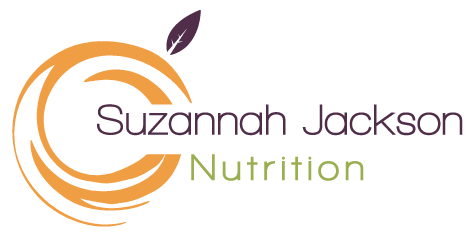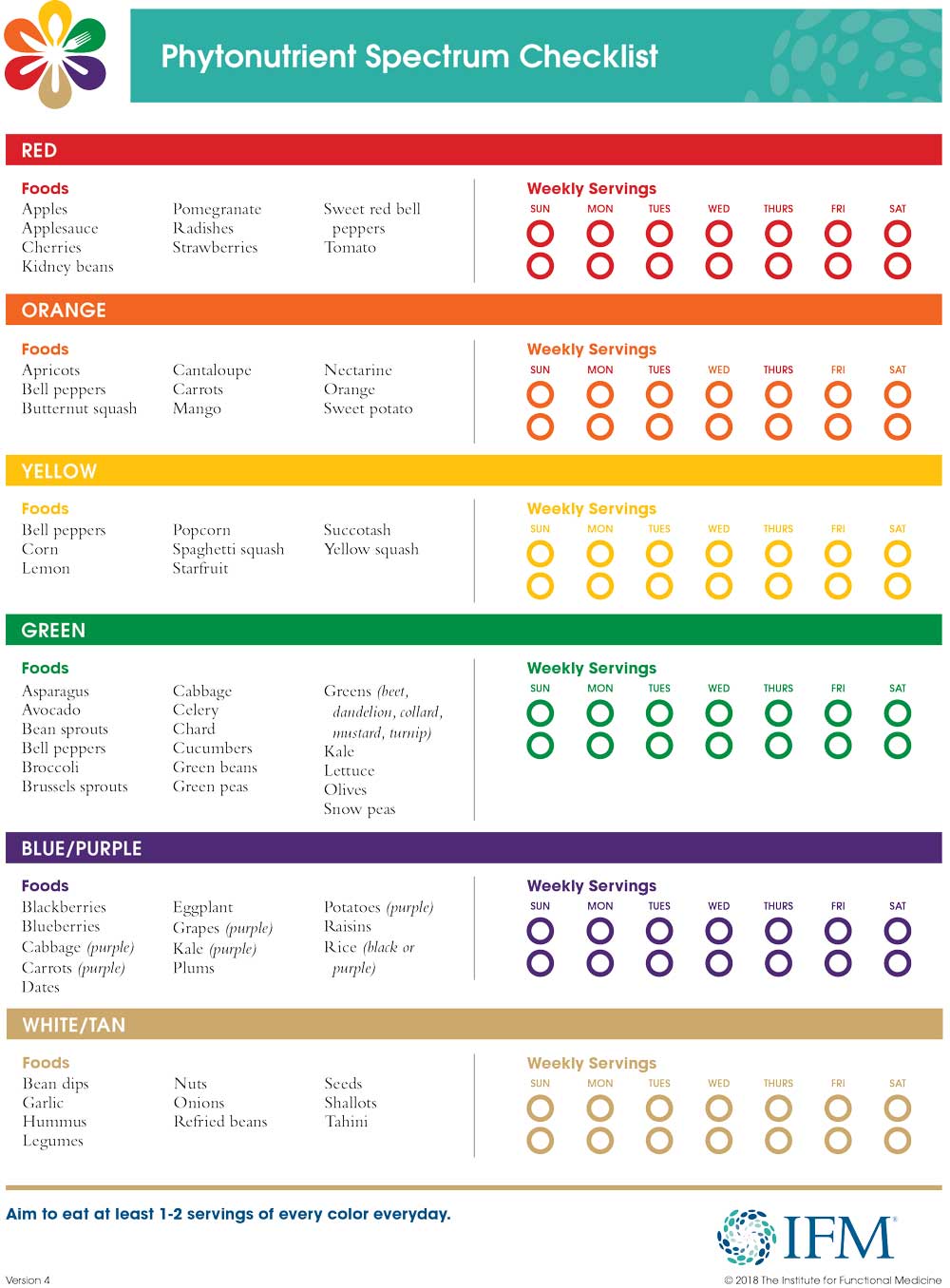When choosing a healthy way of eating it is easy to start with natural colour. Phytonutrients or phytochemicals are natural compounds found in plants. They provide many functions for the plants such as protection from pests as well as distinctive smells and tastes.
In humans, these phytonutrients stimulate enzymes which help boost the immune system, promote estrogen metabolism and help with detoxification.
Fruits, vegetables, legumes, whole grains, nuts, seeds, herbs and spices are all sources of phytonutrients and in order to promote good health it is important to eat a varied whole food diet of various colours.
Most people do not eat enough plants and the recommended amount is approx. 10 portions per day.
A portion means 80g (3oz) – the equivalent of a small banana, a pear or three heaped tablespoons if spinach or peas.
Consider half of your lunch and dinner plate to contain a rainbow of vegetables and alternate your choice.
By eating the same foods every day, even if they are a healthy choice you could be missing out on some vital phytonutrients.
Aim for approximately 10 servings of plant foods daily
– Fruits, vegetables, whole grains, nuts, seeds, herbs and spices
Eat a rainbow of Colours
– Make a goal to eat the seven colours every day
Variety is Key
– Try a new food every week
A varied diet that’s rich in colourful foods helps feed a diverse gut flora. Make healthy eating fun by keeping track of every different food you eat for a week and aim for at least 50 foods, mostly plant-based and of all colours of the rainbow, the brighter the better.
Note down every food only once only within the next 7 days to assess your diet’s
Diversity. Can you reach 50 different foods in week?? Red and white onions count as 2 different foods, bread and pasta count as just one, i.e. wheat.
Herbs, spices and oils all count as individual ingredients.



